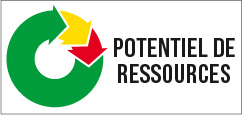„Circular Economy“ – Neue Chancen für Ihr Unternehmen !
von der Wegwerfgesellschaft zur zirkulären Wertschöpfung
In der „Circular Economy“ ist das Ziel, die eingesetzten Rohstoffe über einen Lebenszyklus eines Produktes oder einer Ware hinaus wieder möglichst weitgehend in weitere Produktionsprozesse zurückzubringen.
Die „Circular Economy“ orientiert sich an der Biosphäre, in der natürliche Kreisläufe immer wieder ablaufen. Die Abbauprodukte dienen hier wieder als Boden, Dünger oder Ausgangsstoffe für neue Produkte. Man spricht daher auch vom „cradle-to-cradle“ Prinzip (dt. von der „Wiege zur Wiege“).
Eine wichtige Rolle spielt in der „Circular Economy“ daher die mehrmalige Wiederverwendung (Kaskadennutzung) von Produkten und Waren, um anfallende Abfallprodukte als Sekundärrohstoffe wiederverwerten zu können. Unter Sekundärrohstoffen versteht man Stoffe, die nach entsprechender Aufbereitung wieder als Ausgangsstoffe zu Produktion neuer Waren verwendet werden können und nicht als Abfall deponiert oder entsorgt werden müssen.

Das Ressourcenpotential-Konzept der SDK
Die SDK hat das Konzept des Ressourcenpotentials als wichtigen Bestandteil der Circular Economy entwickelt. Das ISO 14024-zertifizierte Instrument kann sowohl in der Rückproduktion (Recycling) als auch in der Neuproduktion eingesetzt werden.








